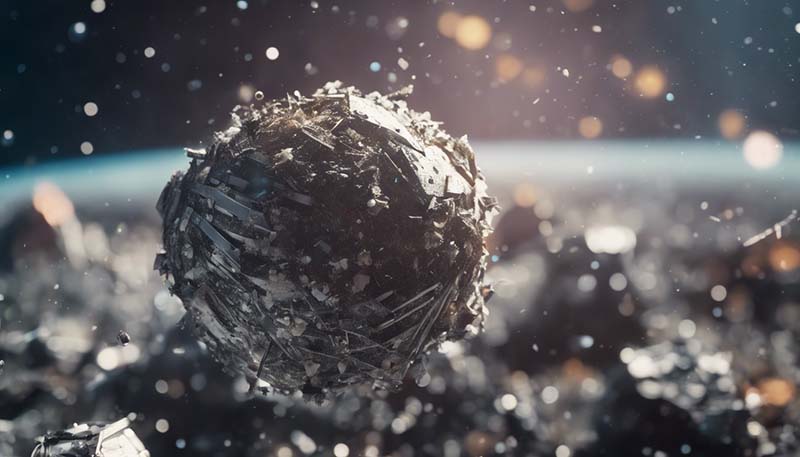The Impact of Space Debris on Future Exploration Efforts
Space debris, also known as space junk, refers to the collection of defunct man-made objects that are orbiting the Earth. These objects include spent rocket stages, non-functional satellites, and fragments from disintegration or collisions. With the increasing number of spacecraft being launched into space, the issue of space debris has become a significant concern for future exploration efforts. This article will discuss the impact of space debris on future exploration, the challenges it poses, and potential solutions to mitigate its effects.
History of Space Debris
The problem of space debris dates back to the early days of space exploration. The first artificial satellite, Sputnik 1, was launched by the Soviet Union in 1957. Since then, there has been a steady increase in the number of objects being sent into space. Today, there are thousands of satellites in orbit around the Earth, with more being launched every year. As these satellites and other objects reach the end of their operational lives, they become space debris.
Some of the most significant incidents contributing to space debris include the Russian satellite Cosmos 375, which exploded in 1962, and the US satellite Westford Needles, which created a cloud of debris in 1963. More recently, there have been collisions between the Russian satellite Cosmos 2251 and the Iridium 33 satellite in 2009, and between an Indian anti-satellite test and its target satellite in 2019.
Impact on Future Exploration Efforts
The presence of space debris poses several challenges for future space exploration efforts. One of the primary concerns is the risk of collisions between operational spacecraft and debris. Even small fragments can cause significant damage to satellites and other spacecraft. The risk of collisions increases as more objects are added to the orbit, making it more difficult to predict and avoid potential impacts.
Another impact of space debris is the potential for it to limit the useful life of satellites. As debris accumulates in orbit, the likelihood of a satellite being operational for its intended lifespan decreases. This can lead to the need for more frequent satellite launches, increasing the cost of maintaining satellite networks and other space-based services.
The presence of space debris also affects the launch process. Launch vehicles must be designed to minimize the amount of debris they generate, and the trajectories of launches must be carefully planned to avoid collisions with existing debris. This adds complexity and cost to the launch process.
Challenges Posed by Space Debris
The issue of space debris presents several challenges that must be addressed to ensure the safety and sustainability of future space exploration efforts. Some of these challenges include:

- Tracking and cataloging debris: Accurate tracking and cataloging of space debris is essential for assessing the risk of collisions and planning spacecraft trajectories. However, the sheer volume of debris and the difficulty of tracking small objects make this a challenging task.
- Reducing debris generation: New spacecraft and launch vehicles must be designed to minimize the amount of debris they generate. This includes using materials that are less likely to create debris upon impact and designing spacecraft to burn up upon re-entry into the Earth's atmosphere.
- Active debris removal: Developing technologies and methods for actively removing space debris is an important challenge. This could include capturing and de-orbiting large debris objects or designing systems to break up smaller fragments.
- International cooperation: Addressing the issue of space debris requires cooperation among
countries and space agencies worldwide. Establishing international guidelines and standards for
debris mitigation and active removal efforts is essential for the long-term sustainability of
space exploration.
Potential Solutions
Several potential solutions have been proposed to address the challenges posed by space debris. These include:
- Improved tracking and cataloging systems: Developing more advanced tracking and cataloging systems can help better assess the risk of collisions and plan spacecraft trajectories. This may involve the use of ground-based radar, telescopes, and other sensors to monitor the location and movement of debris objects.
- Design guidelines for spacecraft: Establishing design guidelines for spacecraft and launch vehicles can help minimize the amount of debris generated. This may include requirements for materials, structural design, and end-of-life disposal plans.
- Active debris removal technologies: Research and development of active debris removal technologies can help remove existing debris from orbit. This may involve capturing and de-orbiting large objects, using lasers or other means to break up smaller fragments, or designing spacecraft that can rendezvous with and remove debris.
- International agreements and regulations: Establishing international agreements and regulations for space debris mitigation and active removal can help ensure that all countries and space agencies are working together to address the issue. This may involve setting standards for spacecraft design, launch practices, and debris removal efforts.
Conclusion
Space debris poses a significant threat to the safety and sustainability of future space exploration efforts. By addressing the challenges it poses and implementing potential solutions, the space community can help ensure that space remains a viable and accessible domain for exploration and innovation.
Leave Your Comments